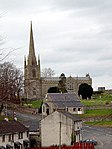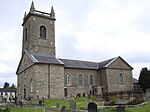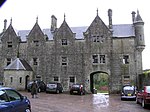
This is a list of Grade A listed buildings in County Tyrone, Northern Ireland.
Contents
In Northern Ireland, the term listed building refers to a building or other structure officially designated as being of "special architectural or historic interest". [1] Grade A structures are those considered to be "buildings of greatest importance to Northern Ireland including both outstanding architectural set-pieces and the least altered examples of each representative style, period and type." [2] Once listed, severe restrictions are imposed on the modifications allowed to a building's structure or its fittings. Listed building consent must be obtained from local authorities prior to any alteration to such a structure. [1]
Listing began later in Northern Ireland than in the rest of the UK: the first provision for listing was contained in the Planning (Northern Ireland) Order 1972; [3] and the current legislative basis for listing is the Planning (Northern Ireland) Order 1991. [2] Under Article 42 of the Order, the relevant Department of the Northern Ireland Executive is required to compile lists of buildings of "special architectural or historic interest". Since 2016, the responsibility for the listing process rests with the Historic Environment Division of the Department for Communities (DfC). [4]
Following the introduction of listing, an initial survey of Northern Ireland's building stock was begun in 1974. [5] By the time of the completion of this First Survey in 1994, the listing process had developed considerably, and it was therefore decided to embark upon a Second Survey, which is still ongoing, to update and cross-check the original information. Information gathered during this survey, relating to both listed and unlisted buildings, is entered into the publicly accessible Northern Ireland Buildings Database. [5] A range of listing criteria, which aim to define architectural and historic interest, are used to determine whether or not to list a building. [2]
County Tyrone covers 3,155 square kilometres (1,218 sq mi), and has a population of around 166,500. The County has 20 Grade A listed buildings.
















